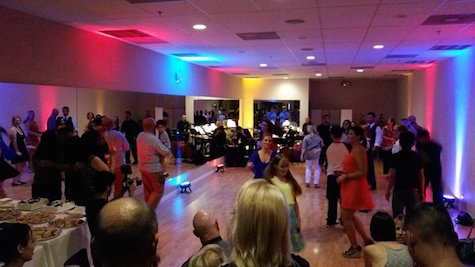Social Dance Etiquette 101
Social Dance Etiquette 101
In any social setting we have to be considerate of others. Those in the social dance scene should know that the dance floor has it’s own set of rules and considerations. Being respectful and aware will make people enjoy accepting a dance with you instead of avoiding you, fearing a potentially unpleasant experience. Read on to get your dose of social dance etiquette 101 and to be in the know!
Before the Dance
Comfortably sharing close proximity with a dance partner requires good hygiene. Shower, use deodorant, brush your teeth, use mouthwash, and bring breath mints to help stay fresh. Wash your hands or use hand sanitizer throughout the night.
Wear appropriate clothing. Are you headed to a black tie event or a country two-step night? Consider where you are going and dress up to meet the occasion. Active dancers should avoid sleeveless shirts and dresses. (See “Hazardous Hair” blog for long mane taming techniques.) Dance shoes are a must.

Social Dancing in Orange County, CA
Asking for and Accepting a Dance
Invite someone to dance with you by asking kindly and using eye contact.
Dance with a variety of people. Be supportive and kind to dancers of all skill levels, remembering when you first started. It’s poor dance etiquette to only accept dances with those who are talented and experienced. Furthermore, you will become a better dancer by dancing with a variety of partners. Dance etiquette rules against asking the same partner for more than two consecutive dances. Some believe that participating in more than one consecutive dance with a person may suggest that you are interested in them as more than a dance partner. Use your best judgment. If you came to the event with a partner, it’s still good etiquette within a social dance function to dance with a variety of people. You can save the first and last dances of the night for your companion.
If someone asks you to a dance you don’t know how to do the dance at hand, think about saying something like, “I would like to, but I don’t know this dance.” This is better than asking the inquirer to teach you the dance. They can decide for themselves if they’d like to help you out or kindly pass.
It’s ok to say no to a dance if the person asking is abusive, threatening, or drunk.
If you decline a dance, do not dance the same song with someone else.
During the Dance
Don’t teach or volunteer criticisms. Dance to the level of your partner, not beyond it. Leaders can start with easier patterns and build the difficulty level throughout the song as they get to know new dance partners.
Line of dance is done in a counter clockwise direction around the floor for waltz, foxtrot, tango, quickstep, Viennese waltz, polka, and two-step. Latin and swing dances are more or less stationary. If there is a song that can be done in both the line of dance and stationary styles of dancing, stationary dancers will stay in the center of the floor, while those traveling will go around the outside.
Check your ego. Partner dancing is not a performance. It’s about connecting with your partner. Don’t blame your partner for missteps. Assume fault and move on.
Be considerate of other dancers on the dance floor. Share the space. This may mean having to sit out a few songs if floor is crowded or there is an uneven amount of leads or follows. Save aerials and big tricks for the stage, not the social dance floor.
After the Dance
Say “Thank You” to your partner. In more formal dance settings, leads may escort their partner off the floor. Otherwise, eye contact and acknowledged thanks for the dance will suffice before heading off the dance floor.
Article by Bella Ballroom instructor, Ziva.

